Today’s essay is a slightly longer one, it’ll take a couple more minutes to read than is custom for my essays. The subject is broad and couldn’t be condensed without losing some of the finer details. I hope you don’t mind.
This essay is based on a small presentation I did to talk about COVID-19 and how we could kickstart after the worst of the pandemic is over. This essay expands on the first part of that presentation exploring the themes in more detail. Look out for the second part in the near future.
Enjoy! Your feedback is welcome.
The digital Caribbean
I’ve written here several times about the state of digital in the Caribbean, and I encourage you to read those earlier essays, you can find them all in the archives.
However, what I didn’t emphasise is just how connected we all are in the Caribbean, but only connected in ways that are mostly ephemeral. Out of the nearly forty-four million people in the Caribbean around 77%, that’s thirty-three and half million people are connected with a data-capable mobile phone. More than 26 million people connect to the internet using a computer. But critically, over 50% of us regularly use social networks, a percentage that is higher than most places in the entire world.
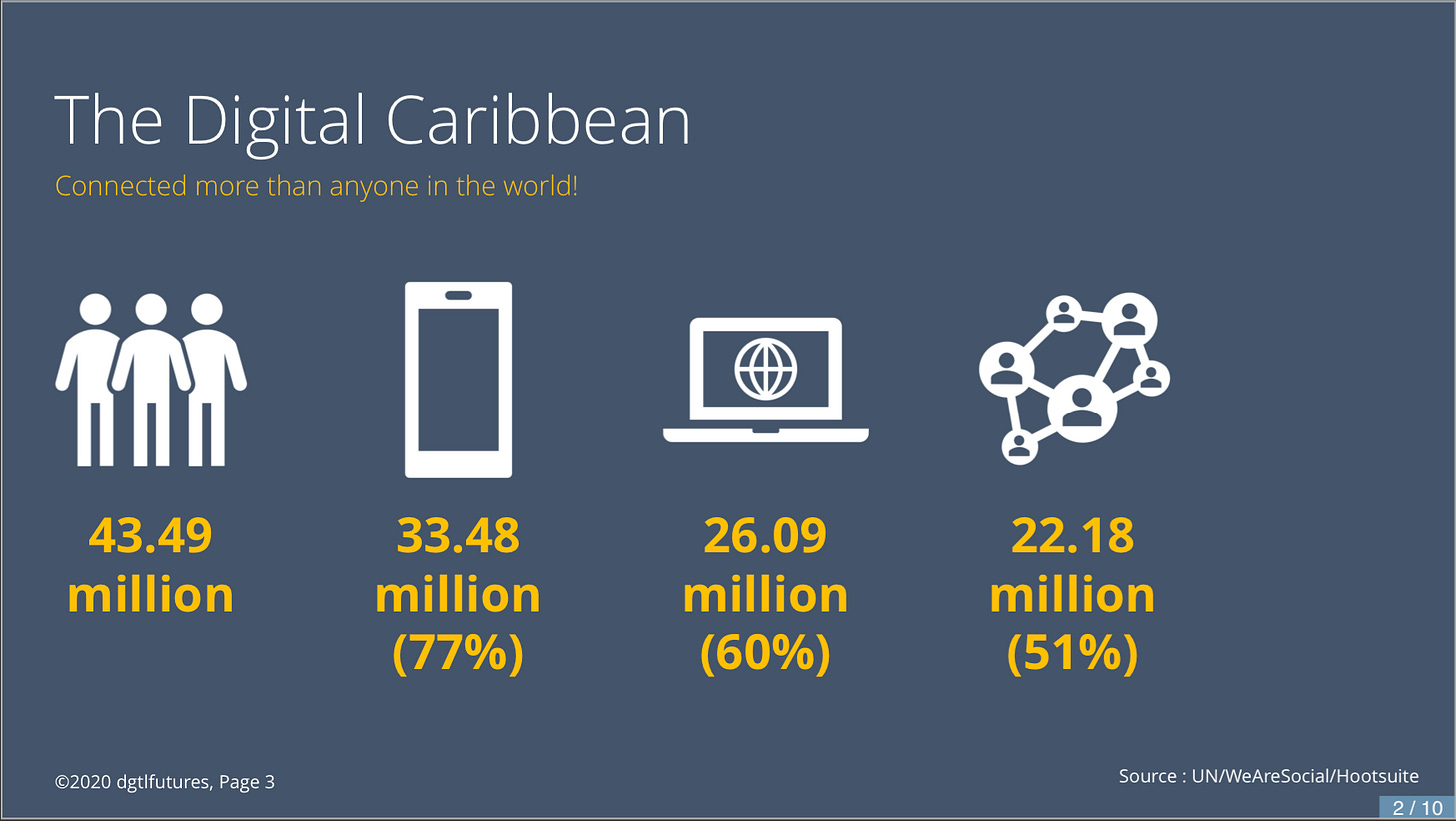
Which begs the question, why are our services, our stores and our governments not online?
It would appear that COVID-19 might be the impetus that finally changes that, and I think that we have more chance that this will change because of this pandemic rather than an earthquake or even a hurricane. I feel that we are in a big, forced experiment where the entire world is collectively conscious at the same time and that we all have some amount of control on our outcomes, which is entirely different from a natural disaster that a) we have virtually no control over our outcomes, and b) nothing works during the disaster event.
If you look at the islands in the North Leewards that suffered greatly in the 2017 hurricane season with Irma and Maria, and the Bahamas during last years’ terrifying and unimaginably tragic passing of hurricane Dorian, all islands affected suffered a complete breakdown of most if not all services, digital services included. With COVID-19 there has been virtually zero downtime and zero outages. Sure, many people could not work when their jobs were centred around physically being at work, but those who could work albeit remotely continued with relatively little effort —if we ignore Zoom fatigue that is— which is a real thing.
To answer the above question, I’m noticing more and more services coming online, like the recently announced online Immigration and Customs Form for travelling to Barbados. It’s great to see this move but it provokes the question about why it took so long. The real answer, of course, is the will or lack thereof. There are virtually no technical reasons in 2020 to not have most services online, it was even possible ten years ago. And even those services that cannot be completed fully online, a major component can be digitised to make processes easier.
Quite often, in the companies I consult for, I see multi-step manual processes in use, despite the company being willing to digitise its processes, for example, A ➔ B ➔ C. These processes cling on in manual form often because process A cannot be easily or successfully digitised despite B and C being eligible. The result is the abandonment of the digital process change. There are, of course, at least two ways to go about this. One is to digitise processes B and C, with process A being manually entered into the system for B and C to run the data. Or, as I tend to analyse, why not re-think the process from start to finish seeing if there is a way to digitise not only B and C but a part of A. It looks like this; A1 (manual) ➔ A2 (digital) ➔ B ➔ C. Going a step further the process can then be redesigned, considering the desire to eliminate manual processes; X ➔ Y ➔ Z, for example. XY&Z achieves the same goals but the data entry and data processing are reorganised to eliminate as much manual entry as possible. In this case, this new process no longer resembles the original process. I’m simplifying the work of course, but you get the picture.
The digital reality
We’re living in a new “digital reality” and approaching an inflexion point where the majority of our lives will be online and those that fail to embrace and effect change will feel pain in many areas of their society. Which is why these first steps cannot come soon enough and why politicians and businesses need to start to radically change their minds to adapt to what is coming, not what is current.
So, how do we achieve this?
The first thing to understand is the current state of affairs, my writing on the current state of digital in the Caribbean goes some way towards this, but further research is needed to look further into the economic, socio-political and business world in the region. Again, I’m doing some of this and intend to do even more going forward, but funding is needed for this to be more widespread.
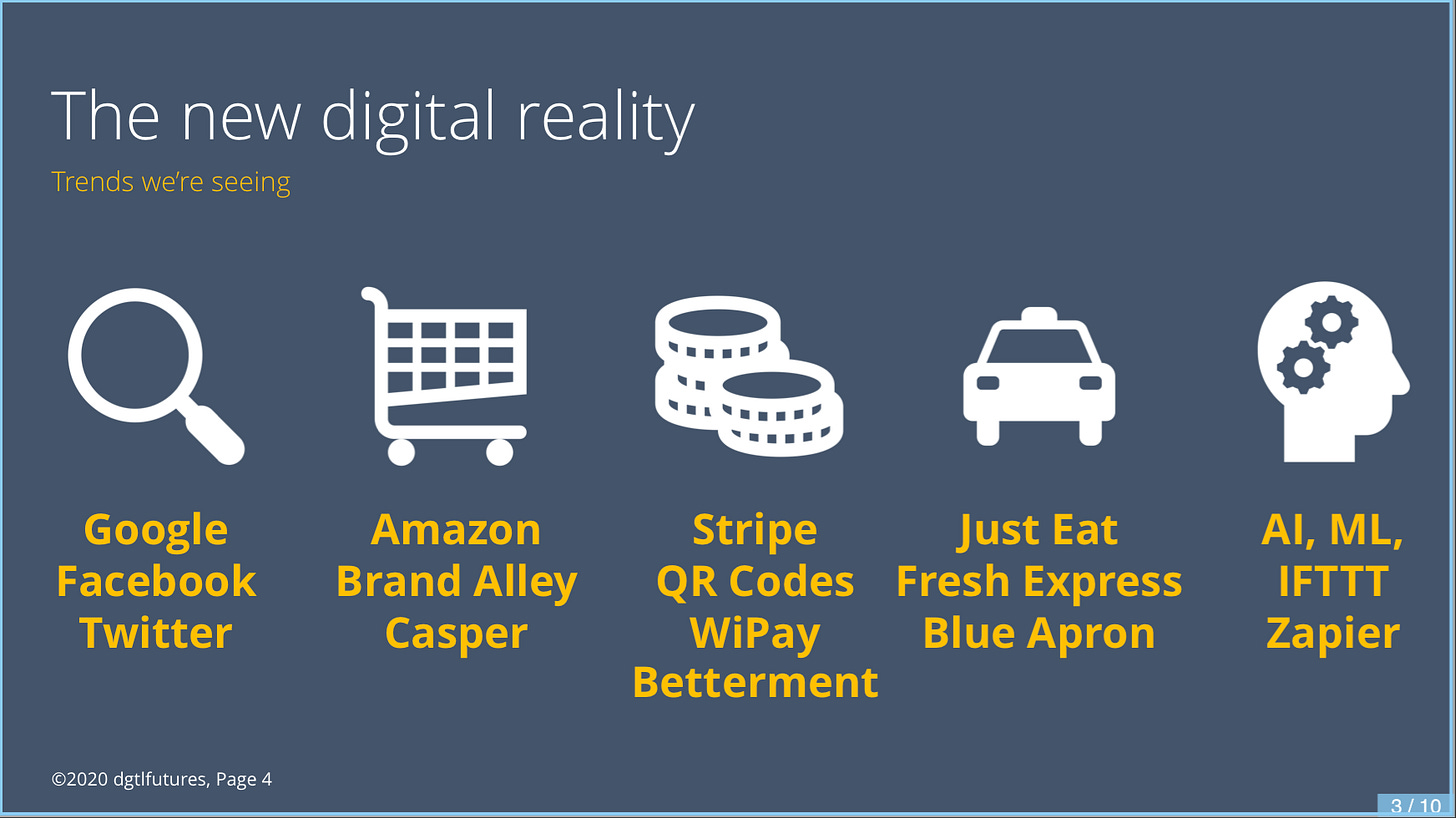
A few examples of my research can be briefly summarised here in five important categories; discovery, purchasing, payments, aggregation/uberisation and automation. Let’s take a quick peek at each of those in turn.
Discovery
In a world of virtually infinite information, content generation and a never-ending avalanche of information flow, we can extrapolate that the chances of information types we want do not exist are virtually zero, in other words, the information is there somewhere. The issue is in finding that information. This is initially where Google stepped in. Google understood that the exponential growth of websites on the internet would render the old model of listings and directories useless at best and dissuasive at worst. Google’s trick was to ignore the direct listings of names and URLs and concentrate on understanding the relationships between all online sites. PageRank was designed around this principle and was implemented to provide more “relevant” results to people’s searches. Up to that point, the internet had logically reproduced the physical Yellow Pages world.
As a result, a whole new industry was born around getting better visibility for businesses on the internet, it’s called Search Engine Optimisation or SEO for short. A name born in the generation when Search was the primary tool used online. This name is already becoming redundant as the “optimisation” is not restricted to search engines, but relevant to all online platforms like Twitter, Facebook, etc., which run their own in-house developed algorithms of their users’ content.
Purchasing
Purchasing habits were being fundamentally altered even before COVID-19 hit. Today’s purchasing can be easily resumed as a few words :
Buy online. Pick-up in-store.
According to qudini, a specialist SaaS Retail Experience company, in a recent survey, 76% of respondents said they had purchased items using in-store pickup after researching and evaluating online. This is only part of the story, as the online retail giants like Amazon are putting greater effort into reducing friction at the point of sale enabling easier and faster consumption. And, despite this, there is still room for the niche markets to be highly profitable businesses, simply because of the sheer scale of the internet. A niche on the internet is a misnomer.
Payments
There is an ongoing trend of mass democratisation emerging in the financial world. Banking is being disrupted, with online-only banks not only reducing friction to access your money but providing more timely services for a fraction of the cost of traditional banks. And as nothing exists in a vacuum, traditional banks are not ignoring this and are implementing new strategies to ensure survival, for example, pivoting some sectors as online banks using a different brand. Consolidation in the back end additionally helps capitalise on the opportunity to become the guarantor for the online banks.
Payments are being simplified and increasingly more integrated with online platforms from everything from membership systems to complete online marketplaces. Stripe is probably the most known and capable in this industry. However, more and more banks are starting to roll out their own online payments solutions. Not willing to let Stripe eat their lunch so easily they are hoping on keeping their clients in-house. They’ll need to be careful of hidden fees, simplicity and friction reduction to do this… something the banks have shown they are not very good at up until now.
Investing is also opening up and becoming easier for the public. Efforts like Betterment and Wealthfront are only the first step of a wholesale dismantling of the staid and exclusive boys clubs that are current investment bankers. Not only that, as we’ll see later, but their use of technology is also outperforming traditional investment experts:
Betterment portfolios outperformed average advised portfolios 88% of the time.
Aggregation and Uberisation
Aggregation is largely an internet phenomenon. It’s an extension of a well-trodden path from the powerful retailers using their muscle to keep clients coming back, thereby using that power to entice suppliers to prioritise their stores (being that the stores can guarantee customers), rinse and repeat. The traditional giant stores like Macy’s and Debenhams rode this wave for several decades. With digital distribution being essentially free, the value chain has been turned upside down meaning that those who integrate throughout the value chain and commoditise their supply generally increase their profit over the incumbents.
The uberisation of services is another trend that appears unstoppable for now. Uberisation facilitates a peer-to-peer driven business model enabled through the use of technology to simplify the on-demand delivery of physical goods and services. The growing use of mobile and the constant connection to the internet allowed Uber to deliver an application that works for both drivers and passengers, hooking them up without the need for a central taxi operator to get involved. The model has been further developed and exploited by food delivery services, interestingly Uber has just acquired Postmates on the back of a decreasing amount of mobility and an increasing amount of online ordering. It doesn’t take a giant leap to see how this could become a deliver-anything service.
Automation
Automation, more specifically Machine Learning and Artificial Intelligence are the last key element. Their democratisation by the Microsofts of the world (see Azure Cognitive Services), is allowing a completely new generation of software designs. Simple operations like the scanning and treatment of receipts direct-to-accounting software are freeing up administrative staff to be better used in more valuable roles. Even simple workflow systems like Microsoft Power Automate can tap directly into the APIs of these services and perform simple repetitive tasks as an aid to decision-making.
Which brings me to the availability of online automation products, of which IFTTT was probably the first to hit notoriety. If This Then That simplified the creation of fun automation that switched on your lights as you neared home or flashed the lights in the colours of your favourite team when they scored. It went even further by hooking into popular SaaS products allowing you to “join” together previously disparate systems. Zapier and Power Automate take this much further, with examples of users replacing no-longer-supported legacy software with modern workflows that are modulable and allow for data analysis, unlike the systems they replace.
The second step is to try to envisage what the future will bring. Easier said than done, but current affairs do give us a few hints at what the future may hold for the internet and business on the internet. In my research three factors come up time and time again. Regulation, health and information misuse.
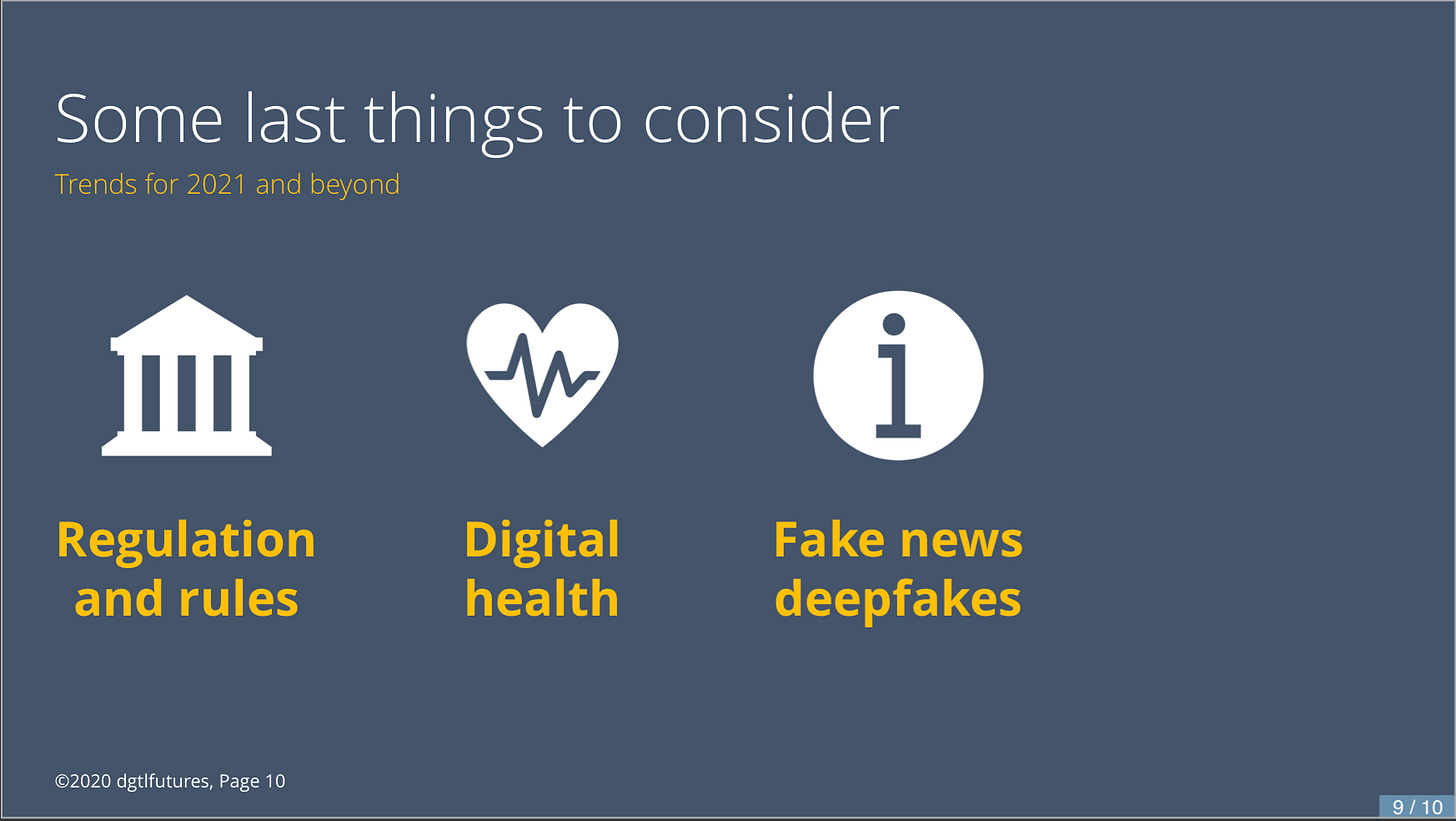
Regulation
I like memes so I couldn’t resist:
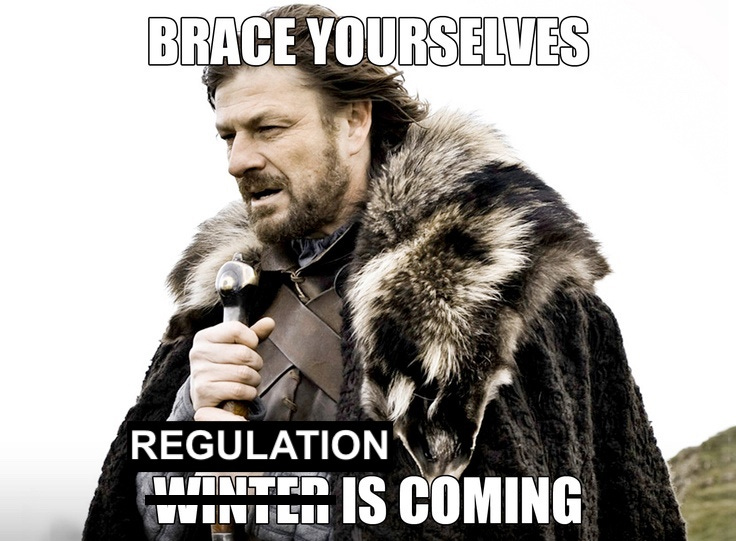
The EU has restarted efforts on its Digital Services Act, a far-reaching proposal to regulate Artificial Intelligence and data collection. Even the traditionally Wild West US is hauling its biggest tech CEOs to testify before Congress in an investigation to determine if the AAAF (i.e., Alphabet, Amazon, Apple and Facebook) are using anti-competitive practices (they are). We can expect the end to the free-for-all that is the current posture in most countries. Regulation will affect not only the giants online but all the supporting systems and smaller operations. GDPR was only a first attempt but its implementation has given impetus for the next wave of regulation, one that will bite harder, there is no question.
Regulation will not just stop at competition and data harvesting, but it will also start to regulate what information can and cannot be published on the internet, much like how traditional media cannot publish absolutely anything. The days of self-regulation are soon over, as, just like the banks, the internet is incapable of regulating itself effectively. Regulation will be very difficult and full of competing ideologies pulling against each other. Just how we are going to shoehorn a global internet into the current state of political divisions around the world is still open to question for the moment. I suspect the EU will move first, and any businesses that are in some way reliant on the EU will feel the early pain, including us here in the Caribbean.
Health
When I discuss health, I’m talking about what is increasingly a difficult subject for parents and concerned parties like schools and businesses, that of Digital Health. Often reduced —incorrectly in my view to screen time— digital health will become a subject that every employer and supplier has to be cognizant of. They will be forced to take it into account when developing systems and processes to prevent people from being adversely affected.
Employers will have to better discern good screen time from bad, to ensure their employees are not overly exposed to bad screen time. But what is bad screen time? How do we define it? How do we measure it effectively? How do we control it? These and many other questions are starting to be debated the world over. Like regulation, it is only a matter of time before it becomes a central aspect of your digitalisation strategy.
Information misuse
The most prominent danger for those of us who spend most of our working and personal lives online is fake news. A phrase the short-fingered vulgarian in the White House likes to overuse when attacking his imagined foes. But fake news is absolutely real, and ironically often created and perpetuated by the likes of Mr Drumpf. It is the fact that it is easy to produce and distribute, making it such a danger to the world and contributes to making it difficult to regulate.
Another problematic innovation we’re seein g in currently limited use is that of deepfakes. They’re not completely indistinguishable to real photos, film or audio. But they are getting better, and with the use of machine learning their efficacy is accelerating. Legislation and regulation have not and likely will not catch up with these developments any time soon. It’s a disaster waiting to happen if it hasn’t already, and we just haven’t noticed it yet.
Interesting times
In summary, we can see that digital integration of business is evolving and accelerating, in part due to the current pandemic, and in part because of the natural changes in a society that is more exposed to digital than previously. Customers in the Caribbean are becoming more digital, although not for the reasons we thought they would —convenience and availability— but for reasons more to do with safety in the face of a virus we still know little about. We see business and structural changes brought about by investment or governmental and organisational willingness to face one of the most damaging crises we've seen to date.
We also see that the very nature of the internet is about to change and change significantly. With more and more governments and populations favouring some form of regulation, it is only a matter of time before whole sections of the internet come under some framework of operations that have previously been rejected. Media, social media and sales of goods and services are likely the first areas regulated, but make no mistake regulation will follow for everything else soon after. The fact that the internet provides a scale of possibilities hitherto unseen, logically means that regulation will affect on a mass scale too.
Even without the pandemic, we were living in interesting times. Adding COVID-19 to the mix has been like pouring water into a boiling chip pan. Hold on tight.
The Future is Digital Newsletter is intended for anyone interested in Digital Technologies and how it affects their business. I’d really appreciate it if you would share it to those in your network.
If this email was forwarded to you, I’d love to see you on board. You can sign up here:
Visit the website to read all the archives.
Thanks for being a supporter, have a great day.







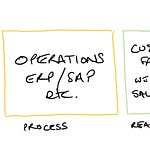
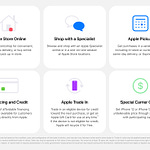

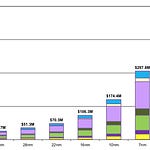
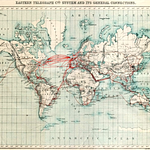
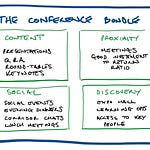
The digital Caribbean and the digital reality